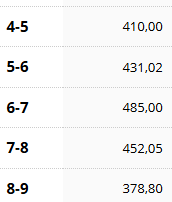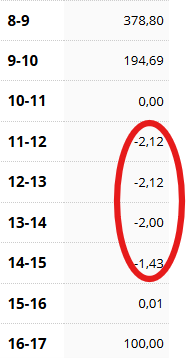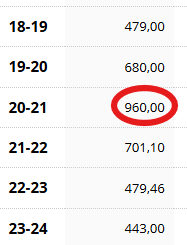From August 2024, energy companies selling electricity to at least 200,000 end users will be required to offer electricity sales based on a dynamic pricing contract.
As a standard, sellers offer contracts with so-called fixed/regulated prices. These are prices based on tariff groups such as G11, G12 or C11, or prices resulting from the sellers’ own price lists, which include fixed mechanisms for determining electricity charges.
In addition, sellers may offer to sell energy at so-called free market prices. Such solutions include a contract with a dynamic electricity price, which is regulated by the provisions of the Energy Law.
What is a contract with a dynamic electricity price?
According to the Energy Law, a dynamic electricity price contract is an electricity sales contract or a comprehensive contract ‘reflecting price fluctuations on electricity markets, in particular on day-ahead and intraday markets, at intervals at least equal to the imbalance settlement period’ (Article 3(6d) of the Energy Law (PE)).
In simpler terms, it is a contract with a price based on quotations provided by the Polish Power Exchange (TGE) (Article 5(4i) of the Energy Law).
If you want to check the current prices, simply visit the TGE website, go to the RTG – Notowania (Quotations) tab, where you will find the RDN and RDB index quotations.
These abbreviations stand for:
- Day-Ahead Market – RDN;
- Intraday Market – RDB.
RDN refers to trading in electricity for the day following the day on which bids are submitted, i.e. RDN participants submit bids to buy or sell energy for the following day, and after 2 p.m. on the current day, TGE publishes the energy prices offered at a given time on the following day, depending on the bids submitted by market participants.
RDB, on the other hand, concerns current quotations. It is trading in electricity delivered on the same day as the day of submitting the bid on the exchange.
It should be mentioned here that dynamic prices under a contract regulated by energy law are based on RDN quotations.
Who can benefit from dynamic pricing?
To benefit from a dynamic electricity pricing contract, you must meet all of the following conditions:
- have a remote meter reading device;
- agree to enter into a contract based on dynamic pricing.
Some sellers also require consent to share profile data on electricity consumption with the relevant DSO.
How to track electricity prices?
As mentioned above, all you need to do is check the price quotations on the TGE website. Depending on the price quotations on a given day, the consumer can adjust their electricity consumption – this way, they can charge their electric car or use energy-intensive household appliances at a significantly lower cost. If negative prices appear at a given hour, the consumer will receive money for receiving energy at that hour, which in practice will reduce their bill. However, this does not mean that dynamic prices have only advantages, as this solution should be used with caution.
Pros and cons of dynamic pricing
The advantages of dynamic pricing include:
- the possibility of increasing electricity consumption during periods of lower prices;
- conscious and economical consumption;
- negative prices that reduce electricity bills;
And the disadvantages?
- we never really know what the price will be at a given time – which can come as a negative surprise, especially in winter;
- electricity is more expensive in the evening, which is generally the period of highest electricity consumption in homes and some businesses;
- no possibility of taking advantage of maximum prices;
- the need to track price quotations if you want to take advantage of the most attractive ones.
Why is electricity more expensive at certain times?
Fluctuations in electricity prices are due to several factors, the most important of which are:
- Morning activities related to preparing for work, school or other activities, i.e. increased consumption in households,
- The start of operations by businesses that do not operate 24 hours a day, such as shops, smaller production plants and service outlets,
- No or very low electricity generation from photovoltaic power plants.
The price fluctuations are illustrated by the RDN quotations from 11 June 2025:


After a period of slight morning increase, due to the start of electricity production by photovoltaic power plants, electricity prices fall – sometimes to negative values. Such situations occur most often between spring and autumn, i.e. during daylight saving time, when the duration and intensity of sunlight during the day are most favourable for photovoltaic installations. Negative prices occur most often during holidays such as May Day or Corpus Christi, and on weekends, when the demand for electricity nationwide drops. The activity of photovoltaic power plants has two effects:
- Entities with their own photovoltaic power plants have a reduced demand for electricity from the grid,
- The amount of electricity fed into the grid exceeds current demand. This energy can be exported abroad, but often power system operators use forced shutdowns of renewable energy installations to block the introduction of surpluses that could disrupt the proper functioning of the power system.


Sample RDN quotation from 11 June 2025.
In the late afternoon and evening, there is a noticeable increase in prices, which usually peak between 7 p.m. and 10 p.m. This is because it is the time when photovoltaic power plants are ‘shutting down’ while maintaining a fairly high demand for electricity, both for households and some businesses. Street lighting is also switched on at this time.


Sample RDN quotation from 11 June 2025.
However, it should be remembered that the quotations available on the Polish Power Exchange are net prices and do not directly reflect the prices offered by the seller, as they include additional components such as excise duty, trading fees, VAT, etc. Some sellers offer their own applications or calculators for tracking prices.
Negative energy prices
As mentioned in the first part of the article, negative electricity prices appear on the exchange. What does this mean? In practice, during periods of negative prices, the producer pays the consumer for the purchase of electricity, so the transfer of funds takes place in the opposite direction than usual. Although negative prices occur occasionally and are fairly predictable, this phenomenon is becoming more widespread every year and is linked to the overproduction of energy from photovoltaic installations.
Negative prices recorded on the Polish Power Exchange will not always mean that the end consumer will receive payment for the electricity consumed. It may happen that a given seller offers only a ‘zero’ settlement under commercial terms, i.e. the parties agree that the consumer does not pay for the volume consumed during the period of negative prices, but also does not receive payment for it.
How are dynamic prices taken into account in contracts?
A description of the entire offer, including the selection of the appropriate tariff, will be included in the contract or, respectively, in the terms and conditions of the offer, where the following will be explained: the method of calculating the price, additional costs (such as commercial fees, excise duty). It is worth remembering the necessary declarations and consents, i.e.:
- declaration of possession of a remote reading meter;
- refusal to consent to a prepaid meter;
- consent to the transfer of consumption information to the relevant DSO;
- consent to billing based on TGE quotations.
Of course, this data may vary depending on the supplier we choose. It is also worth remembering that the energy supplier should provide the end user with information on the costs, benefits and risks associated with contracts based on dynamic prices (Article 5(6h) of the Energy Law). In addition, they are required to inform the customer of the need to install a remote meter, which is necessary if the customer wishes to conclude a contract in this form.



